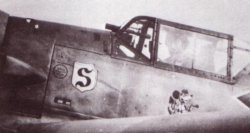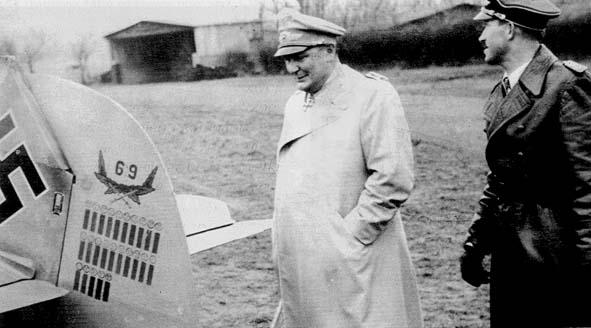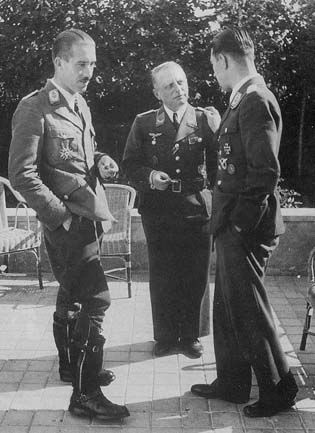 |
Adolf Galland was born on the 19th of March 1912 in Westerholt, Germany. Galland was descended from a family of Huguenots (French protestants) who emigrated to Germany from France to escape persecution. His father was bailiff to the Graf Von Westerholt, a position of honour held by all Galland family heads. Galland was always very air minded, flying a glider by the time he was 19. He enrolled in the Deutches Fliegerschule in 1932, this would become the training ground for the future pilots of the Luftwaffe. Galland crashed once during basic training, smashing up his nose and eye, the eye injury impaired his vision to the point where he could not read the eye chart. This was important because, although he passed his initial exam, the students would be given physicals periodically throughout the training period. So strong was Galland's desire to fly that he memorized the eye chart! He passed all subsequent physicals. When the Luftwaffe was announced to the world in 1935 Galland was an instructor at Schleissheim near Munich, Galland was posted to JG 2 Richthofen. |





